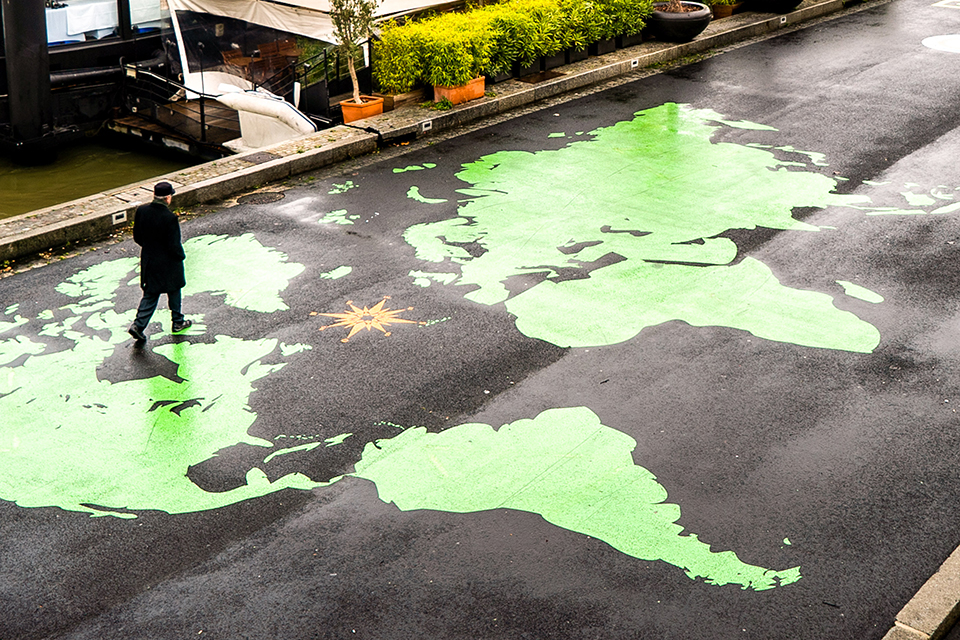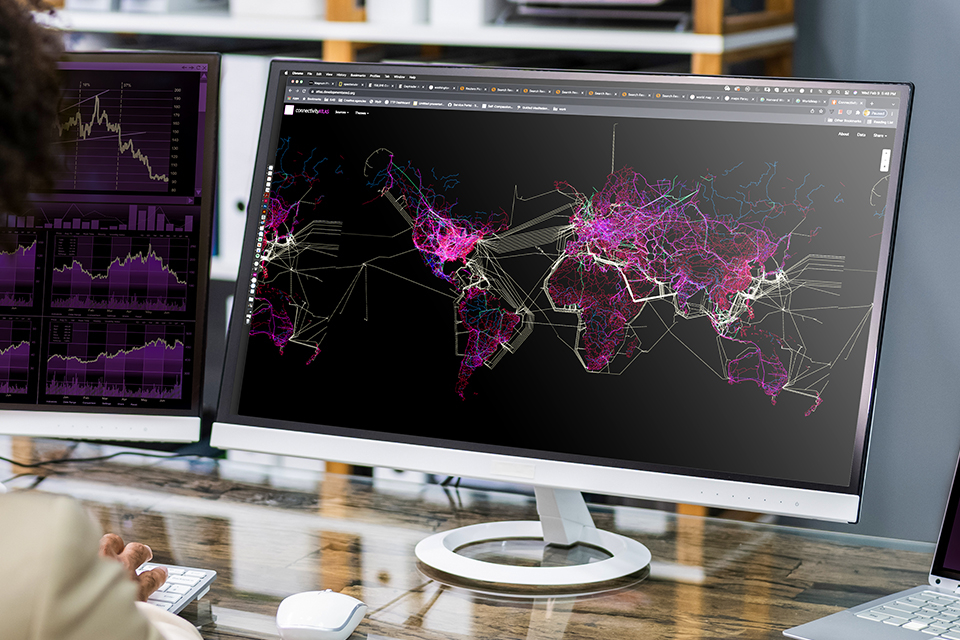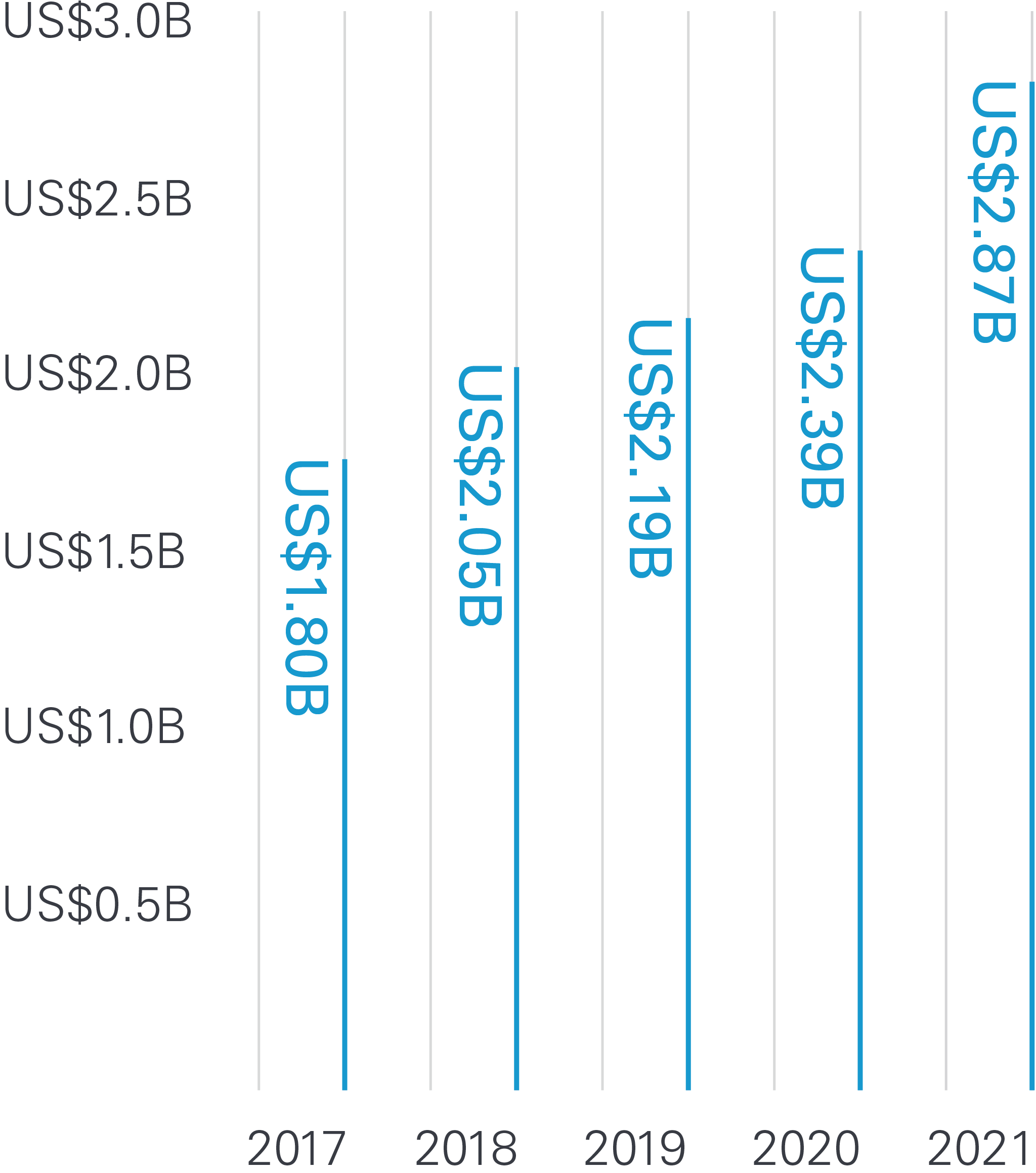What have we learned from COVID-19?
Epidemiologist Syra Madad says it’s critical to engage with local communities



Hugh Verrier
Chair
In 2021, the COVID-19 pandemic continued to affect nearly every aspect of our lives. Against this backdrop, our global teams worked on groundbreaking transactions, resolved high-stakes disputes and, through our global citizenship initiatives, responded to societal challenges around the world.
The role of business in society evolved as environmental, social and governance (ESG) issues entered the mainstream, concentrating on challenges including the energy transition and achieving greater diversity and inclusion. Like our clients, we looked for ways to create long term value and growth—a shared goal that created opportunities for collaboration.
It was in this context that we launched a new five-year strategy, focused on creating a distinctive experience for our clients.
Our emphasis on complex, cross-border matters helped us grow in all of the regions where we work and achieve outstanding results for our clients. As we look to the next five years, we are committed to building the capabilities our clients need, supported by a strong, resilient culture.
Guest speakers at Firm events talk about issues that made news in 2021
Epidemiologist Syra Madad says it’s critical to engage with local communities

Think tank CEO Chris Pinney is encouraged by moves to focus on impact, not just policies and procedures

Bill Emmott, who co-leads a nonprofit that studies the far-reaching effects of COVID-19, discusses the importance of business scenario planning

Developments that reshaped the world
Countries and companies are increasingly committing to net-zero goals that would require them to significantly reduce carbon emissions on relatively short timelines

The pandemic accelerated global concerns over climate change and inequality, pushing societal expectations around responsible business practices into the spotlight

Most of 2021 was characterized by free-flowing capital, as government aid in response to COVID-19 propped up economies

Globalization may be evolving, as nations and regions reassert their regulatory powers on a wide range of issues

Matters in eight practice areas that highlight our global impact for clients
Our 2021 achievements cap an outstanding five-year success story

2,464 Total lawyers
An outstanding roster of talented lawyers strengthened our Firm in 2021

White & Case earned many of the legal industry’s top accolades for outstanding performance in 2021

White & Case is committed to fair and ethical operations that respect human rights and recognize the importance of our natural environment.
As a signatory to the UN Global Compact we affirm our commitment to doing business responsibly by supporting the Compact’s ten principles on human rights, labor, the environment and anti-corruption. The steps we are taking to continue to embed these principles into our Firm are outlined in our most recent Communication on Progress.
Our latest Environmental Sustainability Report includes information on our environmental policies, footprint, key actions and goals.
Where White & Case is a longtime leader — and we're just getting started.
10 global affinity networks
Our ten global affinity networks foster a sense of community among the Firm’s Black, Asian, Latinx/Hispanic, Middle Eastern, minority ethnic and LGBT+ lawyers, business services professionals and their allies. Each network sets its own agenda, initiatives and goals, which are specific to the issues it feels are most important. Affinity networks also create and enhance awareness of these groups within the Firm and its larger culture, drive community and connection across our global offices, and support their members with career and professional development opportunities.
26 local women’s networks
Our 26 local women’s networks are active in 40 offices across the Americas, EMEA and Asia-Pacific. These networks foster professional development and mentoring activities, and support business-related client partnerships. They also provide a forum for our lawyers and business services professionals to share perspectives and create programs to support and retain our talent while fostering and promoting gender equity.
For more than a decade, leading publications and alliance organizations have recognized White & Case’s commitment to diversity and inclusion.
We continued to advance toward our diversity and inclusion goals, narrowing the gap between thought and action with new trainings

Like our clients, we are seeking ways to sustainably create long-term value and growth, a shared goal that presents opportunities to collaborate

We set out to ensure we provide our clients with an experience that emphasizes the attributes they seek in a trusted advisor


Globalization may be evolving, as nations and regions reassert their regulatory powers on a wide range of issues including trade, competition and national security. The economic lessons of COVID-19 and growing concerns about climate change reinvigorated efforts to shorten supply chains, close borders, prioritize local production, and limit the movement of people and goods. At the same time, the pandemic and climate change continue to highlight the need for concerted global action.
We helped organizations around the world as they navigated the changing dynamics of globalization. Here we highlight some of the related issues we worked on in 2021.
The multilateral trading system established after World War II, first through the General Agreement on Tariffs and Trade (GATT) and then through the World Trade Organization (WTO), is under strain, in part due to rising economic nationalism in many countries. Successful new trade agreements have been regional, creating the potential for separate trading spheres, rather than an open global system. US-China competition has taken the form of escalating restrictions on trade, often outside international institutional mechanisms. An open international trading system is also threatened by countries’ exiting agreements. The most prominent example was Brexit, the UK withdrawal from the European Union, a process that continues to unfold even though the separation became official in January 2020.
Starting in 2021, goods and services moving between the EU and the UK became subject to post-Brexit rules and different licensing and compliance regimes. Bilateral trade between the UK and EU is duty- and quota-free, provided the relevant origin rules are satisfied. Customs formalities still apply, and compliance with new product regulations, including product certification, levy additional burdens on companies doing business in and with the UK.
Traditional institutions of trade dispute resolution are under pressure and national governments are increasingly taking trade-retaliatory measures outside the WTO system. Moreover, the COVID-19 pandemic highlighted the risks inherent in long supply chains and generated new pressures for trade adjustments that buttress national production.
Despite these developments, the WTO remains critical, with countries across the globe appealing to WTO standards to negotiate policy differences in areas related to climate, money laundering and foreign subsidies.
Globally, merger control filings reached historic highs in 2021, with data from 25 jurisdictions showing a 42 percent increase in filings compared to the 2016 – 2020 average, and US filings hitting the highest level in the past 20 years. At the same time, more and more national jurisdictions have adopted and begun to enforce merger control and competition laws. The era when the US and the EU effectively determined competition regulation is yielding to one in which more states will influence international mergers, investments and corporate strategy through competition policy.
In the US, domestic politics continue to upend the values underlying competition policy. The consumer welfare standard, which focuses on minimizing consumer price, has long guided antitrust enforcement. But that principle has come under pressure from all angles—including from within the White House, Congress and at antitrust enforcement agencies, who believe antitrust enforcement should target public interests, like encouraging innovation, increasing job growth and advancing equity goals. While much of the discussion has focused on the tech sector, other sectors will also face challenges, as the Biden administration pushes for wide-scale changes to US antitrust laws and a litany of antitrust reform bills are pending in Congress and at the state level.
In the EU, the European Commission (EC) introduced a major policy shift in merger control with a new interpretation of its Article 22 referral mechanism. Transactions that do not meet notification thresholds anywhere in the EU may now be notifiable. The stated goal of the new policy is to bring to the EC’s attention so-called “killer acquisitions.” While the principal targets are mergers in pharmaceuticals and digital markets, the EC may apply its new practice to any transaction where the target’s turnover does not reflect its actual or future competitive potential. On the antitrust enforcement side, the EC signaled its intention to continue its recent revival of dawn raids following the build-up of a backlog due to the COVID-19 pandemic, and its willingness to investigate atypical cartels such as no-poach agreements.
The boom in M&A that started in the second half of 2020 accelerated in 2021, with global deal value topping US$1 trillion in each quarter for the first time on record. A torrent of deals resulted from a perfect storm of activity on the part of strategic, PE and US SPAC dealmakers. The pandemic drove many companies to offload non-core divisions and acquire digital capabilities. Companies that thrived used M&A to consolidate gains. PE firms strove to deploy their massive troves of dry powder. And SPACs searched for opportunities to invest the record levels of funds they raised.
At the same time, more countries are developing regimes to analyze foreign direct investments (FDI), including mergers and acquisitions. While there remains no standalone FDI screening at the EU level, the EU continued to push for a coordinated intensified approach to FDI among Member States. Most countries that have regimes in place tightened their rules and expanded their objectives beyond the traditional scope of shielding defense and national security sectors from foreign influence.
FDI reviews increasingly include sectors related to communications, transportation and healthcare. The Committee on Foreign Investment in the United States (CFIUS), the primary body for conducting FDI reviews in the US, continued to increase the number of deals it analyzes, both from the pool of deals that officially require review and from those that don’t, but attract CFIUS attention based on their connection to sensitive sectors.
In November 2021, more than 190 world leaders gathered in Glasgow to attend international climate conference COP26. While the conference led to many promising decisions, resolutions and statements, its ultimate success remains to be seen.
Notable—and voluntary—commitments made during COP26 included: another declaration by the US and China, the world’s largest greenhouse gas emitters, to continue to work together on climate change issues; a pledge by more than 100 countries to cut methane emissions by 30 percent by 2030; and a promise by more than 130 countries to end deforestation by 2030. In addition, more than 450 financial institutions, with control of more than US$130 trillion in assets, committed to support the achievement of net-zero greenhouse gas emissions by 2050.
In an important development, nearly 200 countries agreed on rules for implementing Article 6 of the Paris Agreement, which established a framework for creating international carbon credit trading markets. Following six years of negotiations over the specific features of these markets, the agreement reached at COP26 paved the way for a global emissions trading platform. However, these rules require further clarification, making it too soon to tell whether pledges will translate into action.
Governments around the world are closely watching cryptocurrencies and other blockchain technologies, partly out of concern for how their proliferation may affect authorities’ ability to protect consumers and set effective monetary policies.
According to the Bank of International Settlements, more than 80 percent of central banks are engaged in work involving central bank digital currencies (CBDCs). This activity is, partially, a response to the rise of stablecoins, which minimize price volatility by pegging their market value to an external reference such as the US dollar or gold. By October 2021, the market cap of the largest stablecoin issuers had reached US$127 billion, representing a 500 percent increase over the previous year.
The US continued to cautiously create a regulatory framework, including stablecoins, in 2021. The Office of the Comptroller of the Currency (OCC), the prime US federal banking regulator, published guidance permitting banks to issue and use stablecoins for any permitted payments activity after the OCC’s review and approval of the safety and soundness conditions. The US Treasury Department subsequently called on Congress to require stablecoin issuers to become insured banks, and issued guidance stating that obligations to comply with sanctions apply equally to transactions involving virtual currencies and those involving traditional currencies.
The extent to which cryptocurrency is regulated in the EU varies by Member State. Spain, for example, recently enacted its first legislation on the subject.
Overall, regulators and policymakers struggled to contend with blockchain-enabled technology and its often-volatile offshoots. In July 2021, the European Union proposed a law that would apply what is known as the travel rule to cryptocurrency transactions, making them more traceable as a guard against money laundering and terrorism financing. The US Securities and Exchange Commission challenged Congress to regulate cryptocurrency to protect retail investors. The agency also launched investigations into cryptocurrency companies, with more likely to follow.
In 2021, non-fungible tokens (NFTs) also had a big year. NFTs are blockchain-enabled digital assets that represent ownership of, or other partial property right in, a unique item such as artwork or a specific seat at a concert. As their sales surged, so did the regulatory and legal challenges they present. These include ensuring the payment of royalties and issues surrounding ownership of the intellectual property that underlies the item associated with the NFT.
Photo by Andrey Popov © Getty Images / Map by Parag Khanna, FutureMap
A computer monitor shows a world map that represents demographics, infrastructure, borders and resources